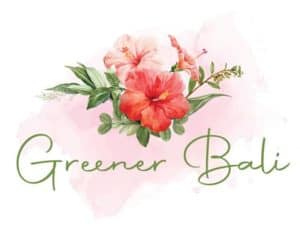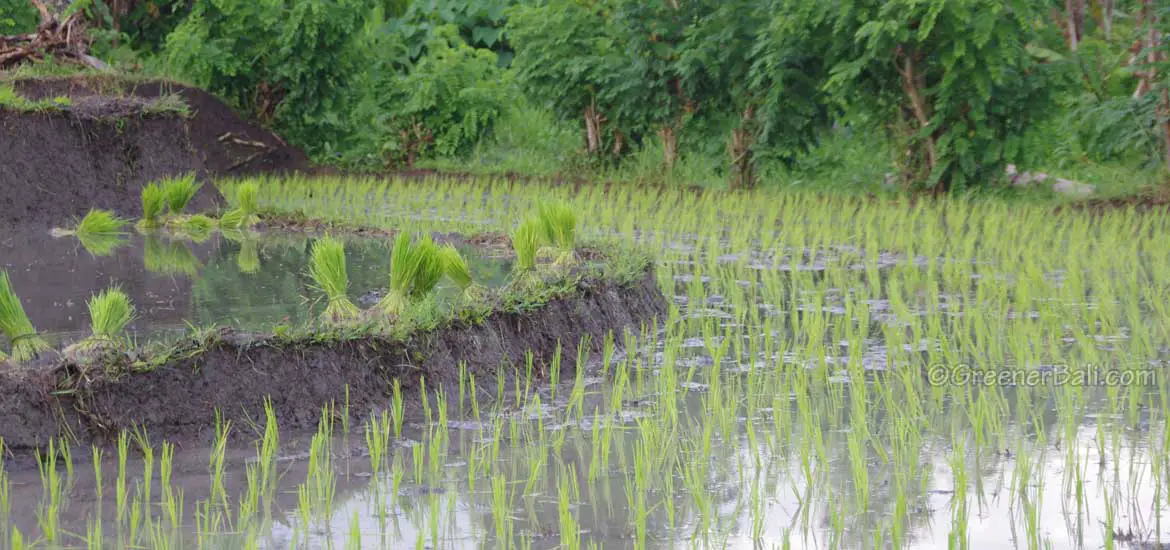One of Bali’s greatest assets is its stunning rice fields. Just by looking at the fields you can imagine that maintaining all of them is pretty complicated.
The Balinese farmers had to come up with a cooperative irrigation management system. Together with their priests and local banjar organisation they call this system ‘Subak’
Every Balinese village has one of these subak systems. All rice field farmers are obliged to join and do what this water management system asks them to do.
Bali is a mountainous volcanic island. To get the water supply from the mountains onto the rice fields below isn’t an easy job. It takes a complex system of canals, tunnels, pipes, dams and dikes to flood or drain the rice fields at the right time.
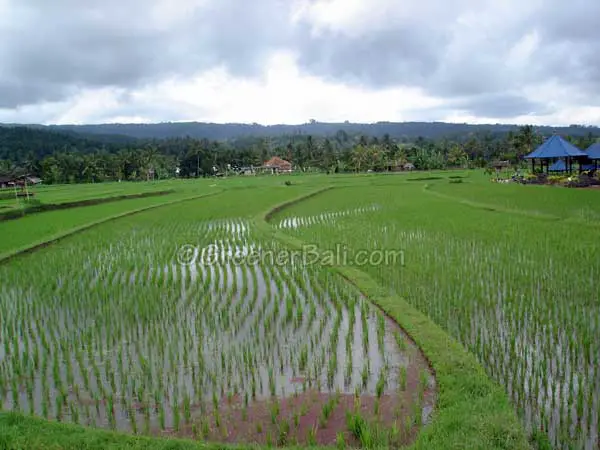
The necessity of the Subak
If a Balinese rice farmer had to do this by himself it would be mission impossible. The whole cultural landscape of Bali as we know today would have looked completely different.
The organisation plans the distribution of water to all the rice field farmers and ensures that there is no shortage. It also does repairs on the many canals, dams and dikes and helps to prevent that sand or waste clogs the rice fields.
The head of the organisation is called the ‘Kliang’. The headmen are called ‘Penyarikan Subak’ who have assistants called ‘Pangliman’.

Comparable to meetings which we are used to, the ‘Kliang’ can be seen as the chairman. He is the one who opens the meetings. Together with the ‘Penyarikan Subak’, the Kliang that takes important decisions by majority vote regarding everything that has to do with irrigation and agriculture
They also keep records of all of its members. When necessary the subak even hands out fines to those members who do not abide to the rules of the irrigation organisation. Every rice farmer has to join these meetings otherwise he will get fined too.
During these meetings the chairman talks about various issues. The repairs which have to be done, the money already spent, communication with government officials and agreements made with other irrigation organisations.
When repairs have to be done all of the members have to be present. However they don’t have to do the repairs themselves, they can hire other workers to do the job for them.
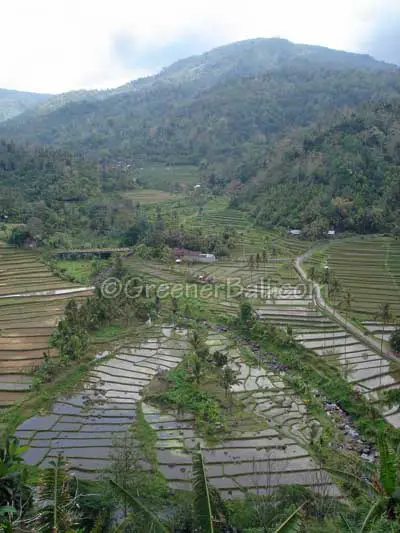
Rituals and ceremonies
You will continuously see rice farmers working in the paddy fields such as in Ubud or the UNESCO world heritage site of Jatiluwih. Either they are working on the maintenance of the dams and canals, harvesting or planting rice seedlings which only happen on certain days according to the religious calendar.
Even though the sight of a rice farmer planting seedlings worth a picture, before even allowing to plant his first seedlings many rituals have already taken place according to the ancient Indian Tri Hita Karana philosophy. This philosophy is a manifestation of the relationship between humans, the gods and the earth.
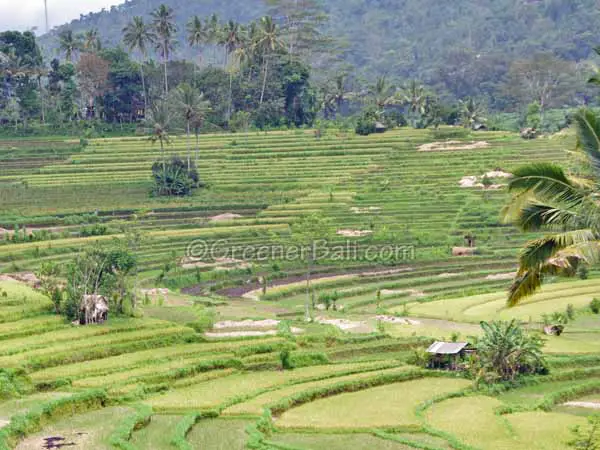
The start of these important rituals takes place at the temple compound of the water temples of Pura Ulun Danu Batur or Pura Ulun Danu Tamblingan.
Here, the ‘Kliang’ together with the ‘Pemangku’ (village priest) and four of five members of the irrigation organisation place offerings at these sacred places to get a blessing from the deities of the lake. They then carry some water from these water sources in a bamboo container. Here they place it at the shrine in the middle of the rice fields. They believe that the deities are manifested inside the container. Therefore a feast is given to honour them.
The irrigation organisation members will perform dances to entertain the deities so the deities will not leave the area.
The rice fields are then sprinkled with some of this sacred water. The rest of the water is given to the main canal which flows to the rest of the rice fields.
More on the Subak
Interested in how the cycle of rice works? Visit the Subak Museum in Tabanan in Banjar Senggulan. This museum is open from Monday to Thursday and Saturday from 8 AM to 4.30 PM and Friday from 8 AM to 1 PM.
